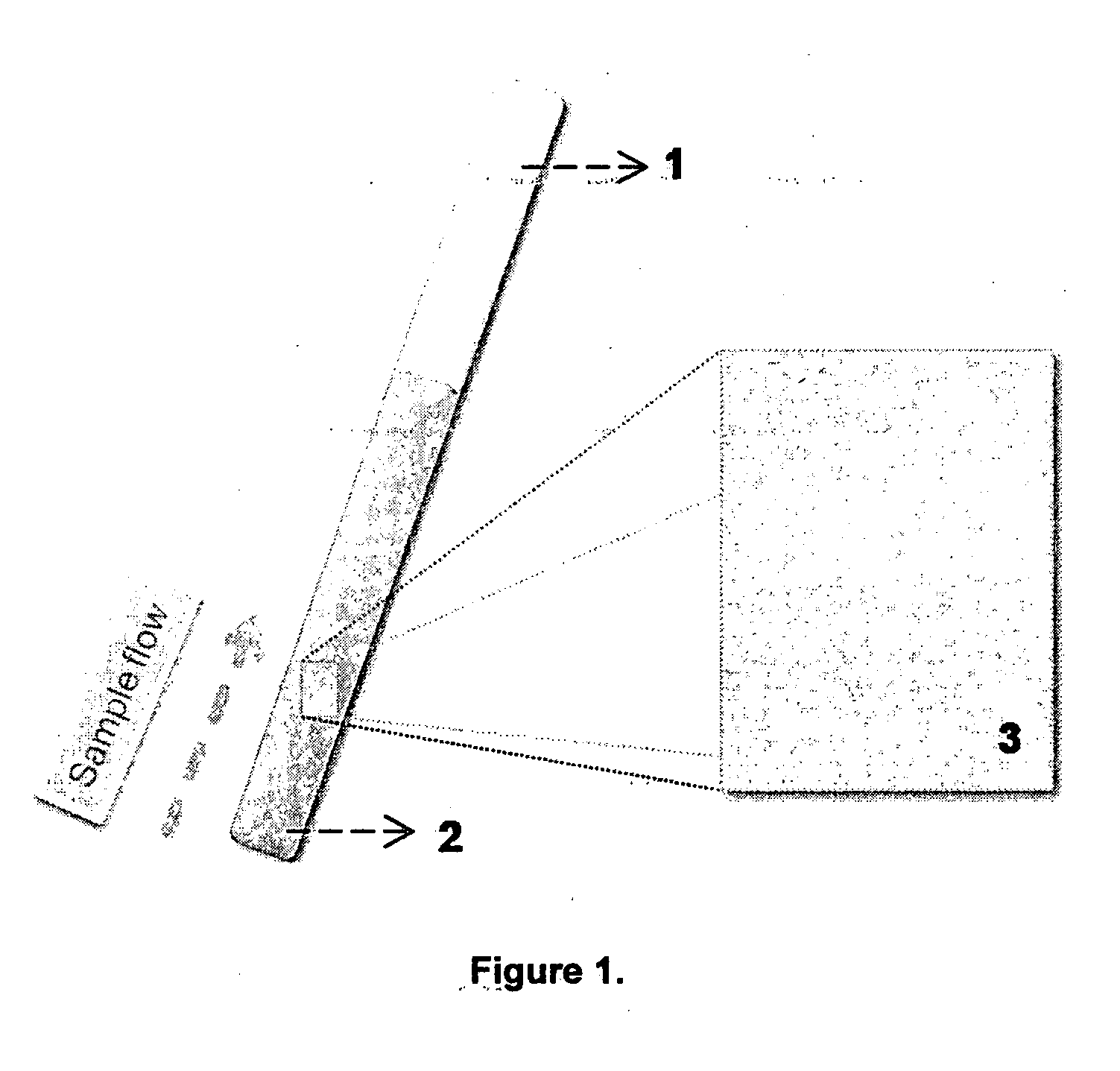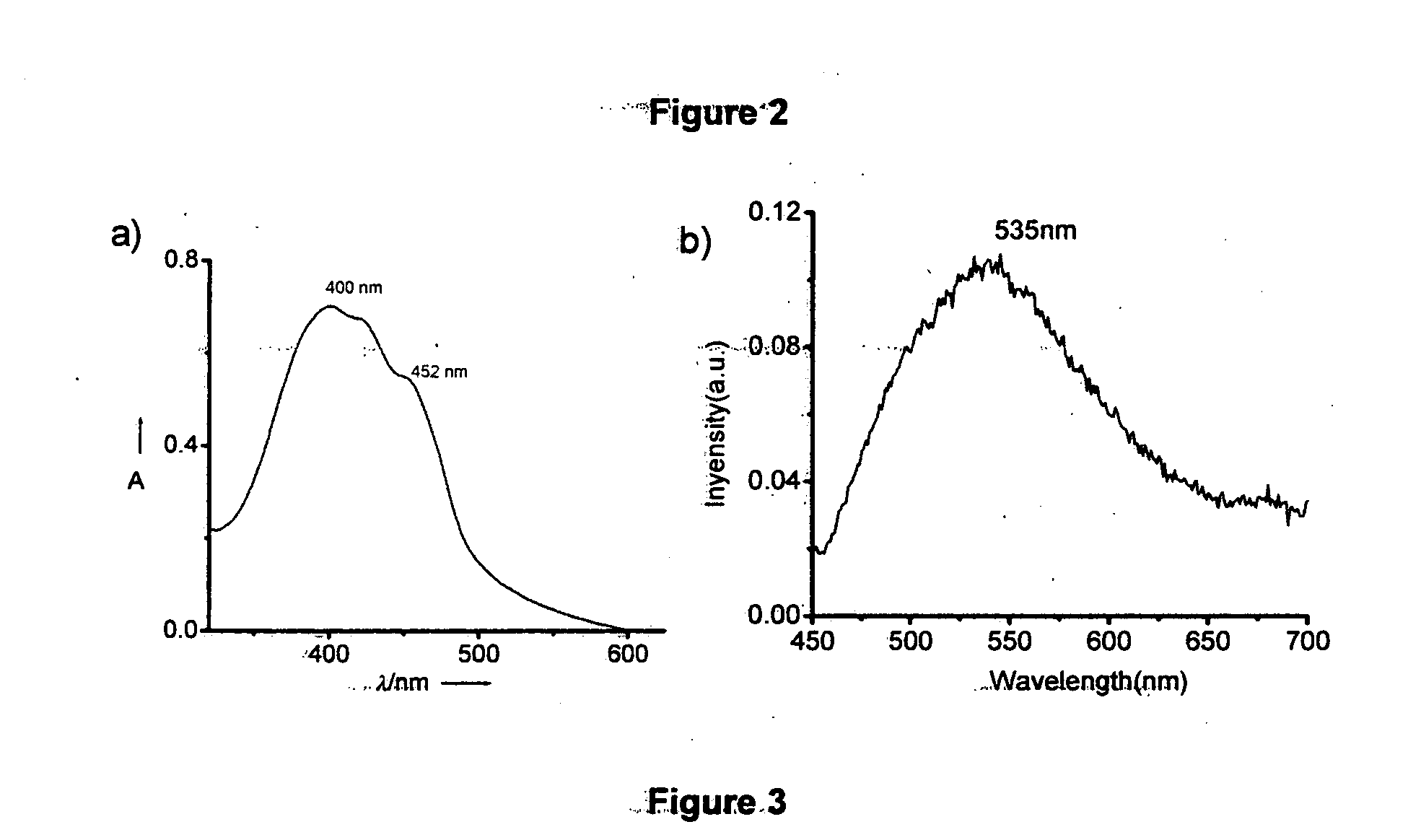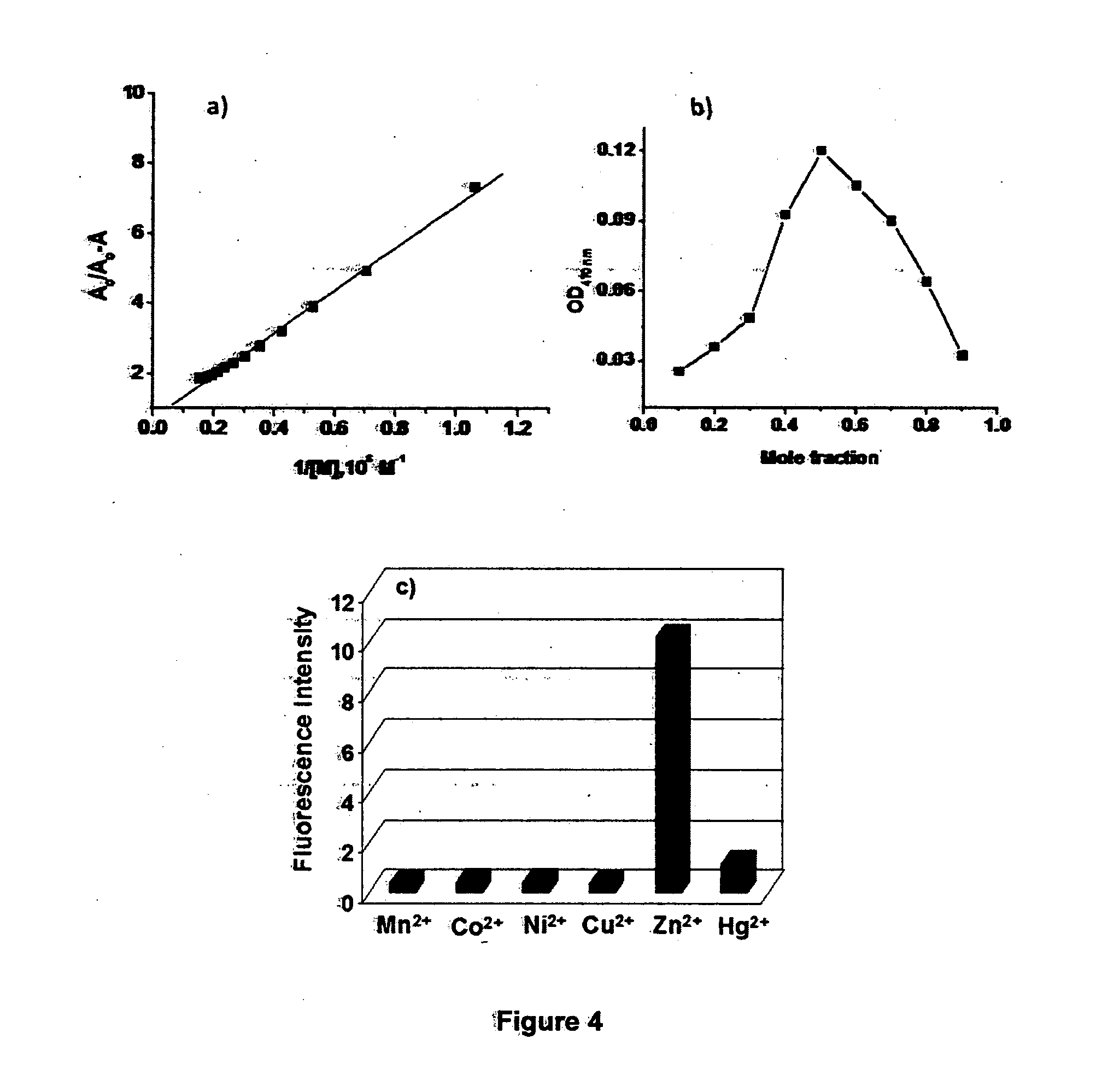Pyrrole end-capped bipyridine assay powder for selective detection of zinc ions and a process for the preparation thereof
a technology of pyrrole end caps and assay powder, which is applied in the direction of instruments, organic chemistry, suspensions, etc., can solve the problems of difficult estimation of the extent to which zinc deficiency conditions persist today, low concentration of free zinc, not strongly bound to proteins, and difficult estimation of free zinc using classical methods, etc., to achieve the effect of simple and convenient, accurate, fast, and real-time method
- Summary
- Abstract
- Description
- Claims
- Application Information
AI Technical Summary
Benefits of technology
Problems solved by technology
Method used
Image
Examples
example-1
a) Preparation of 5,5′-bis(bromomethyl)-2,2′-bipyridine (bisbromomethyl)
[0063]To a solution of 5,5′-dimethyl-2,2′-bipyridine (10 mmol) in 50 mL of dry carbontetrachloride was added N-bromosuccinimide (20.5 mmol) and AIBN (Azobisisobutyronitrile). The reaction Mixture was refluxed for 18-20 h., cooled, filtered and the solvents were removed under reduced pressure to give the crude product which was further purified by recrystallization from CCl4. Yield 80-90%; mp. 188° C.; 1H NMR (CDCl3, 300 MHz) δ 4.53 (s, 4H, CH2Br), 7.79 (m, 2H, aromatic), 8.34 (m, 2H, aromatic), 8.61 (m, 2H, aromatic). 13C NMR (CDCl3, 75 MHz) δ 29.43, 121.25, 133.28, 137.70, 149.27, 155.19.
b) Preparation of the 5,5′-Bis-(diethyl phosphonomethyl)-2,2′-bipyridine (Bisphosphonate)
[0064]Bisphosphonate were prepared by the reaction of the corresponding bisbromomethyl derivatives (2 mmol) with 3 mL of triethyl phosphite at 80-85° C. for 10-12 h followed by the removal of the unreacted triethyl phosphite by vacuum. Yiel...
example-2
Preparation of the Assay Having Formula 1
[0065]A suspension of sodium hydride (12 mmol) in dry THF was added slowly to a solution of the bisphosphonate (2 mmol) (Example 1b) and the respective N-alkylpyrrole-2-carboxaldehyde (4 mmol) in THF. After refluxing for 12 h the highly fluorescent reaction mixture obtained was cooled followed by the removal of the THF under reduced pressure to give a pasty residue. The residue was suspended in water and extracted with dichloromethane. The organic layer was washed with brine, dried over Na2SO4 and concentrated to give the crude product, which was further purified by column chromatography over silica gel using petroleum ether as eluent. Yield 40-45%; mp. 82° C.; IR (KBr) νmax 2925, 2853, 1699, 1626, 1467, 1209, 1045, 950, 850, 727 cm−1; 1H NMR (CDCl3, 300 MHz) δ 0.89 (m, 12H, CH3), 1.28 (m, 16H, CH2) 1.76 (m, 2H, CH), 3.93 (m, 4H, NCH2), 6.17 (t, 2H; aromatic), 6.58 (d, 2H, aromatic), 6.67 (s, 2H, aromatic), 6.87 (d, 2H, vinylic, J=16.07 Hz), ...
example-3
[0066]Thermoplastic or glass support was cut as shown in FIG. 5, as 10 cm long and having 4 mm radius. Assay containing alumina is carefully fixed over the surface of the support and the said dipstick is ready to use. A 25 ml beaker containing zinc perchlorate solution (5×10−4 M) is taken and the stick is dipped in it, followed by the agitation of the stick in the solution. Wherever the analyte is in contact with the stick a color change will be observed from yellow to orange red, which indicates the presence of metal ions. If the color change is followed by intense change in the fluorescence from greenish yellow to deep red it indicates in specific the presence of zinc ions (FIGS. 5 and 6). The dipstick removed from the test sample is rinsed in aqueous EDTA solution, preferably by holding the bottom of the stick under EDTA solution in a small beaker. After EDTA treatment wash the stick with pure water and now the stick is ready for another application.
PUM
| Property | Measurement | Unit |
|---|---|---|
| temperature | aaaaa | aaaaa |
| reaction time period | aaaaa | aaaaa |
| reaction time | aaaaa | aaaaa |
Abstract
Description
Claims
Application Information
 Login to View More
Login to View More - R&D
- Intellectual Property
- Life Sciences
- Materials
- Tech Scout
- Unparalleled Data Quality
- Higher Quality Content
- 60% Fewer Hallucinations
Browse by: Latest US Patents, China's latest patents, Technical Efficacy Thesaurus, Application Domain, Technology Topic, Popular Technical Reports.
© 2025 PatSnap. All rights reserved.Legal|Privacy policy|Modern Slavery Act Transparency Statement|Sitemap|About US| Contact US: help@patsnap.com



